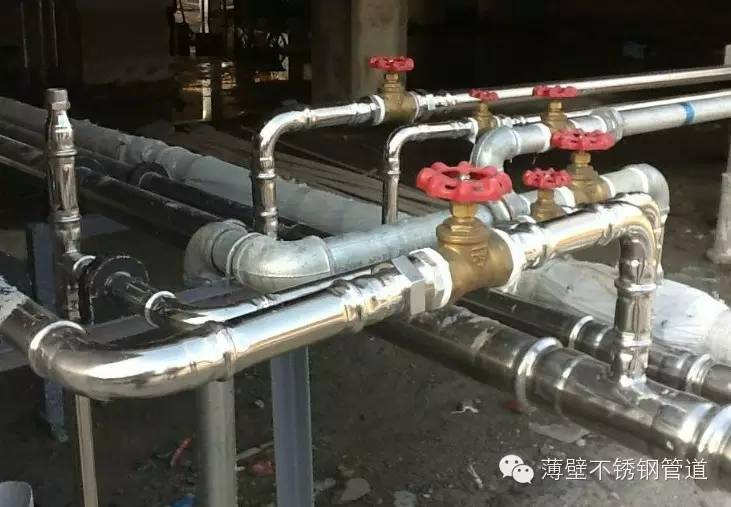What are the causes of pitting corrosion of thin-walled stainless steel hot water pipes?
Release time:
2022-06-07 12:01
Source:
Author:
Number of views:
thin-walled stainless steel hot water pipes?
In the environment with wide distribution of chloride ions and many corrosive media, once the passivation film is destroyed, corrosion spots will be formed. In addition to some surface inclusions, chromium-poor areas, grain boundaries, dislocations, etc., the stainless steel surface may also be corroded, rust spots appear, and the surrounding loses luster, thus forming corrosion.
Corrosive media will cause crevice corrosion to stainless steel hot water pipe fittings. For example, rainwater, condensed water, and water containing chloride ions will cause crevice corrosion, especially in places where cracks are small and oxygen is difficult to penetrate, such as water supply pipe flanges, Threaded connections, etc., gap corrosion may also occur when connecting different materials.
It should also be emphasized that when carbon metal or grinding wheel cuts foam, corrosive media such as welding oxides and carbon steel powder layers remain in the thin-walled stainless steel tube, and then under the action of voltage and current in the surrounding environment, Unexpected electrochemical corrosion occurs. 
thin-walled stainless steel hot water pipe degreasing inspection methods?
thin-walled stainless steel hot water pipe degreasing inspection methods: pipe degreasing treatment using degreasing solvent that meets the planning rules and degreasing requirements, if the planning is not standardized, can use carbon tetrachloride degreasing, check whether the degreasing is qualified, thin-walled stainless steel hot water pipe packaging pipe degreasing cleaning, should meet the following requirements.
Use ultraviolet light with a wavelength of 320 ~ 380nm to check the inner wall of the pipeline. There should be no grease fluorescence. Use clean and boring white filter paper to scrub the inner wall of the pipeline. There should be no oil stains on the paper, or use degreasing solvent to detect that the oil content does not exceed the requirements of the entrusting party. Other relevant technical indicators proposed by the entrusting party. The chemical cleaning and degreasing process of
stainless steel oxygen pipeline standardizes the construction process of cleaning and degreasing of oxygen pipeline, greatly improves the internal cleanliness of oxygen pipeline, is a reliable guarantee for the safe operation of oxygen pipeline, and is worthy of attention and implementation of stainless steel pipeline manufacturers.
thin-walled stainless steel hot water pipe coloring method
1. chemical oxidation coloring method: refers to the color of the film formed by chemical oxidation in a specific solution, including dichromate method, mixed sodium salt method, vulcanization method, acid oxidation method and alkali oxidation method, common mycology method is widely used.
2. Electrochemical coloring method: The color of the film formed by electrochemical oxidation in a specific solution.
3. Chemical method of ion deposition oxidation coloring: place thin-walled stainless steel water pipes in a vacuum coating machine for vacuum evaporation coating. For example, titanium-plated watch cases and watchbands are generally golden yellow. This method is suitable for processing a large number of products, because the investment is large, the cost is high, and small batch products are not economical.
4. High temperature oxidation coloring method: immerse the thin-walled stainless steel water pipe in a specific molten salt and maintain certain process parameters, so that the thin-walled stainless steel water pipe forms an oxide film of a certain thickness and presents various colors.
5. gas phase pyrolysis coloring method: more complex, less used in industry.
Latest News
2023-02-12










